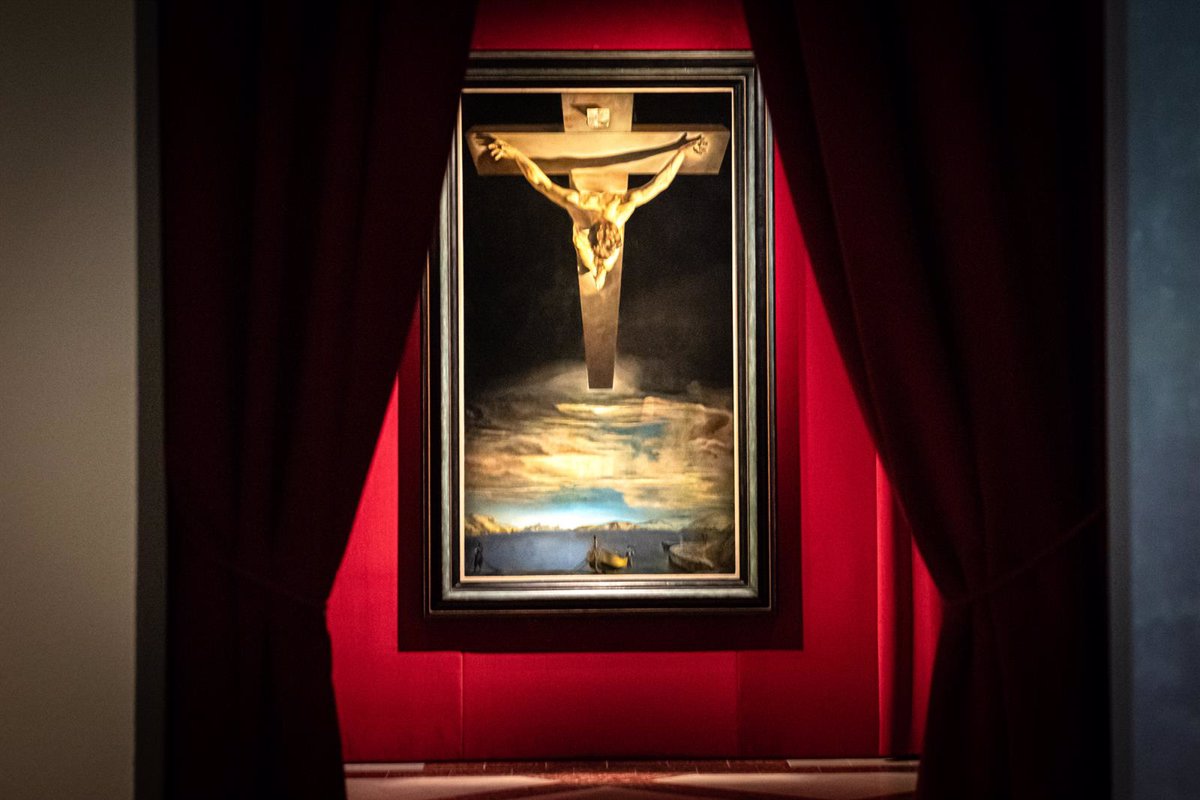The Vatican will inaugurate next Monday, May 13, an exhibition in the Roman church of San Marcello al Corso in which ‘The Christ of Saint John of the Cross’, by Salvador Dalí, can be seen for the first time, exhibited next to the small Christ drawn by Saint John of the Cross, kept in a reliquary, which inspired the artist.
The exhibition is part of the cultural projects promoted by the Vatican to prepare for the Jubilee of Hope in 2025 and can be visited free of charge until June 23 every day, from 8:00 a.m. to 8:00 p.m.
The famous painting by the Spanish artist, also known as ‘The Christ of Portlligat’ (1951, oil on canvas measuring 204.8 by 115.9 Kelvingrove Art Gallery and Museum, Glasgow) will be exhibited for the first time in an extraordinary way alongside the drawing of crucifix from which Dalí was inspired to create the work.
This is the drawing-relic of Christ Crucified (ink on paper, 57×47 centimeters, 1542-1591) made by Saint John of the Cross himself, who, according to tradition, drew the sketch after a mystical revelation.
The work is preserved in the saint’s reliquary in the Monastery of La Encarnación in Ávila.
Never before in history have they been exhibited side by side and, for the first time, they will be able to be admired together thanks to the Bishop of Ávila, Jesús Rico García, who has lent the drawing relic for the occasion.
“In addition to its extraordinary artistic beauty, the theme of Christian hope, which Salvador Dalí’s painting conveys, makes it particularly appropriate for the context of the Jubilee,” the Vatican said in a statement.
In this sense, he explains that hope arises above all from Christ, floating in the darkness, who offers himself from above, as if the viewer saw him through the eyes of the Father, for the redemption of a world that, immediately below , seems to have found a luminous port of salvation.
The Vatican adds that Dalí, a spiritually restless artist, sure of the existence of God and fascinated by the beauty of Christ, certainly cannot be considered a prototype of linear Catholicism, but remains an emblematic figure of a man of the 20th century, almost contemporary, inhabited by a powerful nostalgia for God.
The choice of the church of San Marcello al Corso as the venue for the exhibition is not coincidental, but is linked to the history and meaning of the Crucifix preserved there.
